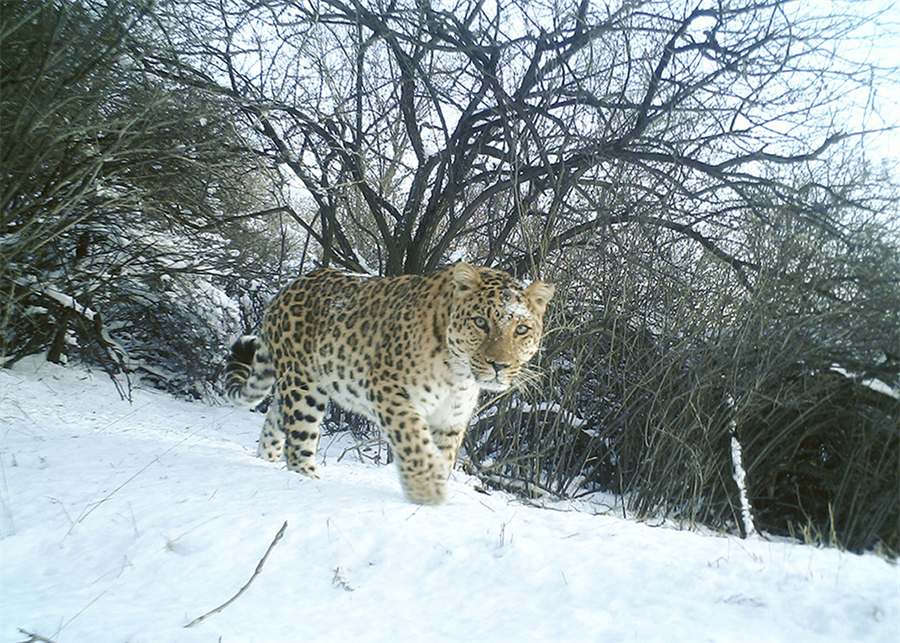Leopard population rising amid protection efforts

A male North China leopard patrols its "territory". [Photo/Xinhua]
TAIYUAN — A healthy North China leopard was recently spotted in the wild in Shanxi province, further confirming the increasing population and expanded activity range of this rare species.
The North China leopard is one of the world's nine subspecies of leopards. Its population is mainly distributed in northern China, with the total population across the country estimated to be fewer than 400.
In the past, the leopard was widely distributed in the Taihang Mountain area. Today, however, its population is fragmented, with each cluster containing fewer than 50 animals.
The species is facing a high risk of extinction in certain regions due to poaching, environmental changes and human interference.
Fortunately, recent population trends indicate steady restoration, proof that progress is being made in the local ecological environments.
Thanks to a series of ecological protection initiatives in China — including the Three-North Shelterbelt Forest Program, a large-scale afforestation project, and the natural forest resource protection project — the ecological quality of the Loess Plateau, which encompasses Shanxi province, has greatly improved.
The apex predator of the local ecosystem, North China leopards have been increasingly spotted in Lyuliang Mountain, Taihang Mountain and other nearby mountain ranges in recent years.
In 2019, some were seen in Chengde, Hebei province, which is only 100 kilometers north of Beijing.
Efforts promoting harmony between humans and wildlife are also contributing to the continuous rise in the leopard population, said Song Dazhao, one of the founders of the Chinese Felid Conservation Alliance, a nonprofit organization specializing in the protection of wild cats in China.
With the expansion of human activities, wildlife habitats are inevitably encroached upon, Song explained, noting that in some cases, local villagers have resorted to retaliatory hunting against wild animals because of past instances of predation on their livestock.
To help address the problem, the CFCA launched a project called "Buy Steak for Leopards" in Shanxi in 2015.
"When the leopard faces the threat of retaliatory hunting, ecological compensation is the most direct way to solve these problems and reduce the risk of such hunting," Song said. The project not only protects the property of local villagers but also provides sanctuary for the North China leopard.
In order to further strengthen biodiversity protection, Shanxi, where the North China leopard is often sighted, is striving to enhance the diversity, stability and sustainability of its ecosystem.
The provincial department of ecology and environment plans to establish and improve the province's coordination mechanism for biodiversity protection and work with other related departments to promote the comprehensive protection of ecosystems, biological species and genetic resources, thus accelerating the harmonious coexistence of humans and nature.
Xinhua
























